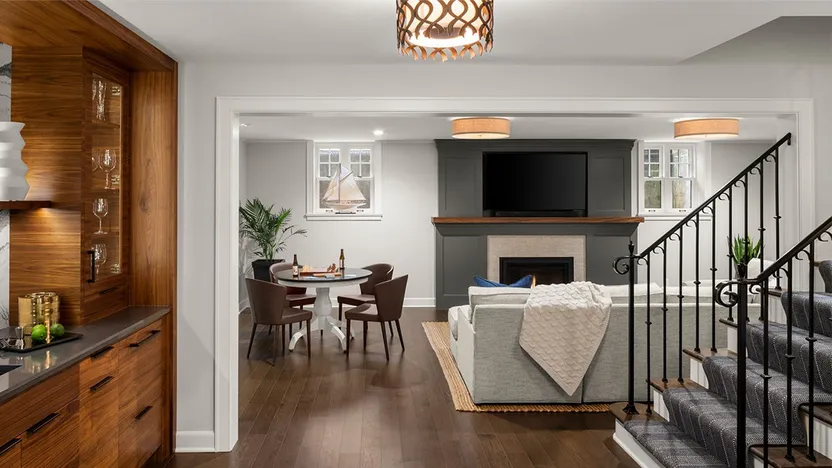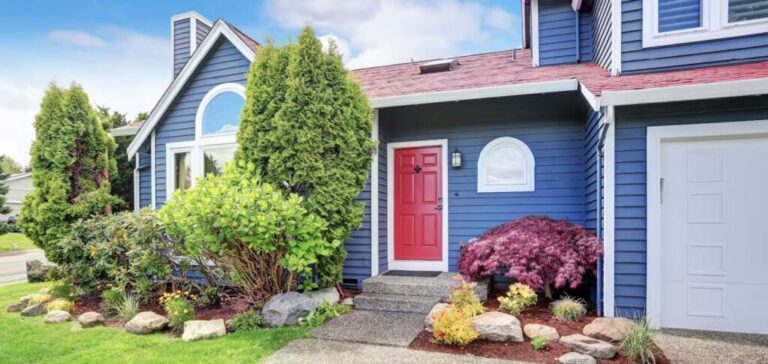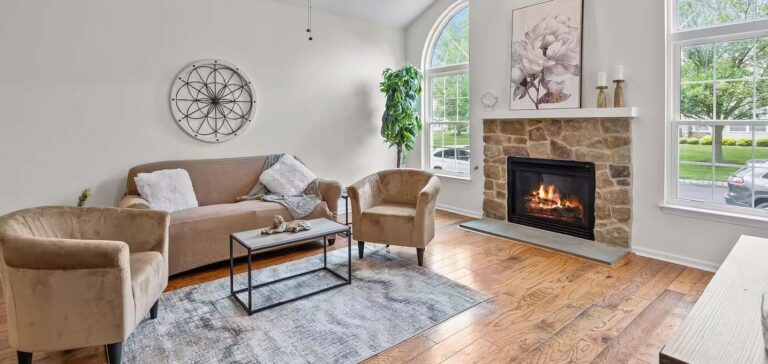
Your basement, if you have one, is probably the most underused space in your house. And if you’re pining for more square footage, it might be high time to give it a second look. Some upgrades can turn your basement into a great place to set up a home office, watch TV, or store that 12-pack of paper towels, right?
Yet with inflation soaring and budgets tight, it might not seem prudent to pour significant dollars into this dark space. So rather than fully renovate your basement, why not try some simple, inexpensive upgrades instead?
To that end, we’ve got the skinny from the pros on how you can update your basement with a few smart touches and easy DIY tasks. Read on to see this overlooked space in a whole new light.
1. Install luxury vinyl planks
Staining or painting a concrete basement floor is a DIY job that some homeowners could definitely take on, but Jessica Grier, a real estate agent at Native Collective in Charlotte, NC, favors luxury vinyl planks instead (or LVP for those in the know).
This quick-to-install flooring choice looks like hardwood and is easy to cut and snap together.
2. Put down rug tiles
Want an even easier floor covering option in your basement? Warm up your space with a statement rug, suggests Elise Armitage, the lifestyle and design blogger at What the Fab.
Grier also votes for nifty Flor rug tiles, which are so easy to install that even a child could do it. Choose from endless bright colors and patterns, then lay out the design you like. When you’re ready to put in your pattern, simply attach each piece with the included adhesives. Done!
3. Paint it white
“Basements are known for being very dungeon-y, so even if your space is unfinished or only partly finished, painting it white cleans it up and makes it feel more usable,” says Grier.
This DIY project is a sizable one if your basement is large, but smaller areas can be painted in a day or two, depending on whether you’re putting up two coats.
4. Add more lighting
Darkness contributes to the creepy feeling you get when you descend into your basement, so fix this situation with more lamps.
Floor versions, tabletop lights, or even battery-operated lamps you can tap on when you enter can all help brighten your space, says Grier.
Kara Harms, the lifestyle and design blogger at Whimsy Soul, recommends Philips Hue or other smart lights.
“Ditch the fluorescent bulbs and instead use different colors to change the mood of the basement,” adds Harms.
5. Dehumidify it
Musty and dank are two common basement descriptors. But a basic dehumidifier can work to remove moisture in the air and improve the room’s feel overall.
This GE Energy Star model ($199, The Home Depot) compares the set humidity level you’ve chosen with the actual humidity in the room and then adjusts the fan speed to match it—which is genius.
6. Jazz up the stairs
After lighting and dampness, the stairs that lead to your basement can be another troublesome issue. If yours are rickety, it might be wise to call in a handy person to check the safety of your stairs and then shore them up.
But if your staircase is solid, adding a runner to it is a fairly easy DIY task. You’ll not only infuse a pattern or color pop, but also warm up your descent and reduce the chance of slipping on bare wood as you go down.
To install a stair runner for your basement, you just need the runner rug and a staple gun. A bolster chisel, a tool that lets you create a tight crease on each stair, is a nice add-on.
7. Put in some storage
Grier suggests basic shelving or a unit in the basement because “a storage system creates value in this space.”
Warm up the room with a wall of pantry supplies (and get the excess out of your kitchen), or line up a bunch of books and small objects for a curated look.
8. Add some greenery
Freshness is also lacking in the basement, but you can solve this quickly with some greenery.
Bringing in nature with real flowers is fine; however, you’re better off with low-maintenance succulents or faux plants (no watering and no dead leaves to sweep). Fake trees are another way to go as these look more lifelike than ever and can fill a corner or two quickly.
9. Divide and conquer
You can’t hide the fact that laundry and workbenches exist in most basements, but you can literally hide them from view. A simple plywood partition isn’t hard to install if you’re a savvy DIY type. But you don’t need a hammer and nails to make the temporary wall you want.
Instead, hanging a tapestry, sliding a couple of bookcases into place, or opening up a folding screen to divide the room also works.
Article originally appeared on Realtor.com.







